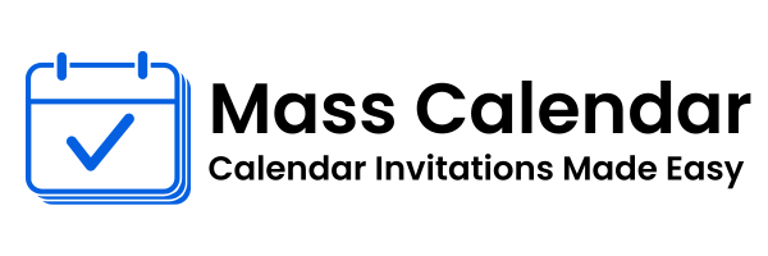A Complete Modern Guide to Calendar Invitations and Smart Scheduling
Scheduling is a crucial part of professional and personal life. Whether planning a team discussion, a doctor appointment, or a large-scale virtual event, the ability to create and manage a calendar invite effectively keeps everyone aligned.
BLOG
11/19/20253 min read


Scheduling is a crucial part of professional and personal life. Whether planning a team discussion, a doctor appointment, or a large-scale virtual event, the ability to create and manage a calendar invite effectively keeps everyone aligned.
This long-form guide covers essential practices, best methods, and useful principles for organizing daily activities through digital calendars with clarity and efficiency.
Why Calendar Invites Are Essential Today
Digital scheduling simplifies coordination. Instead of manually reminding everyone, a quick send meeting invite action triggers notifications for all attendees. These reminders sync across devices, ensuring people stay updated regardless of the platform they use.
Calendar invites also:
Reduce communication gaps
Provide quick access to meeting details
Offer automated reminders
Improve time management
With hybrid and remote work models, invites serve as the backbone of modern communication.
Understanding How Calendar Invitations Work
Most calendar systems follow a similar structure. They allow you to insert event details, add attendees, choose a time, and send notifications. Participants automatically receive the event, which appears on their calendars.
Whether on email or a standalone application, the underlying goal remains the same: seamless scheduling with minimal effort.
How to Create Calendar Invites Across Platforms
Sending on Gmail
Many individuals and teams prefer Gmail for email and scheduling. Understanding how to send calendar invite Gmail helps users coordinate more effectively. You can add attendees, select repeat options, and attach documents. The interface guides you through each step.
Learning how to send calendar invite Gmail also ensures you can quickly update or modify details when schedules change.
Sending in Outlook
Professionals often use Outlook for office coordination. Knowing how to send calendar invite in Outlook improves communication and reduces scheduling friction. Outlook includes a detailed layout for choosing time, agenda, participants, and reminder types.
Whether using desktop or mobile, calendar invites synchronize easily across devices, allowing attendees to view information wherever they are.
Creating consistent invites also allows you to understand best practices for organizational clarity.
Crafting a Clear Calendar Invitation
A good invitation is more than a date and time. It communicates purpose, expectations, and context.
Essential Parts:
Title that describes the meeting
Date and time with accurate time zones
Description summarizing the purpose
Attachments such as documents or agendas
Location or meeting link
Understanding how to send calendar invitation effectively ensures smooth communication and reduces back-and-forth clarifications.
Managing Large Groups and Bulk Scheduling
Workflows often involve repeated or high-volume scheduling. If you're managing bulk calendars tasks, such as events or recurring sessions, planning ahead helps.
Useful strategies include:
Preparing templates
Reuse structured event formats to save time.
Segmenting attendees
Group people based on departments, interests, or functions.
Scheduling buffer time
Avoid stacking large meetings back-to-back.
Large-group scheduling does not have to feel overwhelming. Breaking tasks into understandable components helps maintain a consistent flow.
What Makes an Effective Invitation?
Below are qualities that improve clarity and participation:
1. Contextual titles
Guests should instantly know what the meeting is about.
2. Precise timing
Avoid confusion by choosing proper time zones.
3. Focused descriptions
Include only essential information.
4. Attached resources
If necessary, include files, links, or visuals.
Common Mistakes When Sending Invites
Even professionals may miss a few details. Here’s what to avoid:
Double-booking events
Always cross-check your existing schedule.
Sending incomplete invitations
Missing links or unclear descriptions disrupt preparation.
Over-inviting
Only include people who directly need to attend.
Building Better Scheduling Habits
Good scheduling skills reduce missed meetings, conflicts, and confusion.
Review your calendar daily
Helps you stay on track.
Use consistent naming formats
Maintains clarity across multiple meetings.
Add descriptions to all events
People appreciate context.
Set reminders
Useful for important sessions and deadlines.
The Evolving Nature of Digital Schedules
As virtual work becomes more common, calendar systems continually evolve. They are becoming smarter, more automated, and more integrated with communication tools. Understanding how to invite calendar events in structured ways prepares you for future workflows.
Regardless of the platform, proper scheduling improves productivity and helps individuals manage their commitments better.
Conclusion
Calendar invites are an essential communication tool in modern life. Whether you're figuring out how to send calendar invitation emails or managing larger calendars bulk schedules, the foundation is always clarity and organization. By learning cross-platform methods and adopting strong scheduling habits, you can manage meetings, events, and reminders with confidence.
MassCalendar.in
Send Bulk & Mass Calendar Invites Instantly
CONTACT
Meetings
+44 (0) 203 916 5117
© 2025. All rights reserved.
Help?
